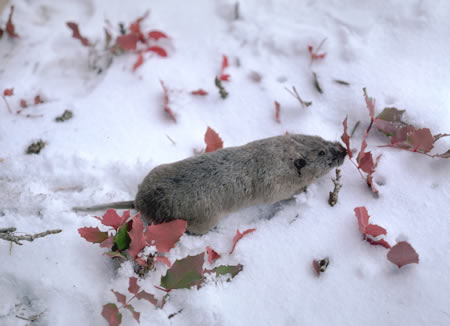Yesterday, I watched NOVA's premiere on PBS with the title "MT ST HELENS BACK FROM THE DEAD". The show informs us about insights gained from thirty years of examination of Mount St. Helens and its surroundings, after the volcano blew out its top and one entire side in a massive explosion on May 18, 1980.
By contrast, underground the outlook is different. Though we have learned much about the forces driving the mountain's eruptions, the interviews with geologists on NOVA make clear that we understand little about the rhythms of seismic activity under the volcano, rendering accurate risk assessment and reliable prediction of a major eruption virtually impossible. I remember watching the last period of noticeable volcanic activity five years ago. I witnessed a dome grow inside the crater and lava glow at night. Ever since, the volcano appears ostensibly quiet.
Despite this respite, the show urgently reminds us of the need to keep a close eye on the mountain. The behavior of burrowing animals with a highly developed sense of touch may provide signatures that may help warn us of a major impending seismic event (see related posts). It may be instructive to observe Northern Pocket gophers. I periodically check the U.S. Forest Service's volcanocam, the least because on some days, weather willing, the mountain looks magnificent and I love to watch the seasons change on her:

Addendum
- Dmitrieva and others (2013) report that sustained ground vibrations between 0.5 and 5 Hz, known as seismic tremor, have been observed to precede explosive volcanic eruptions by 30 s. Rodent whiskers are particularly sensitive in this range (see my post with the title "The Quest for the Infrasound Acoustic Fovea" published Oct. 12, 2009). The gophers in the pumice zone of Mt. St. Helens may have been saved by sensing this early warning. Ira Flatow interviewed a co-author of the study in the broadcast segment entitled "Volcano 'Screams' Before Eruption" on National Public Radio's Science Friday yesterday (07/20/2013).
Related Posts
- The Beautiful Eimer's Organ
- Neuroanatomy of an Earthquake
- The Quest for the Infrasound Acoustic Fovea
Reference
- Dmitrieva K, Hotovec-Ellis AJ, Prejean S, Dunham EM (2013) Frictional-faulting model for harmonic tremor before Redoubt Volcano eruptions. Nature Geosci: doi.org/10.1038/ngeo1879.







Peter,
ReplyDeleteYour web cam doesn't work for me. Recording MStH Nova here in Baltimore tonight.
Does MGLU5 activation promote or antagonize apoptosis?
We must wait for sunshine. According to Movsesyan and others (2004), mGluR5 agonists may diminish beta-amyloid-induced apoptosis in nerve cell cultures.
ReplyDeleteReference
Movsesyan VA, Stoica BA Faden AI (2004) MGLuR5 activation reduces beta-amyloid-induced cell death in primary neuronal cultures and attenuates translocation of cytochrome c and apoptosis-inducing factor. J Neurochem 89: 1528-1536.
Best wishes,
Peter